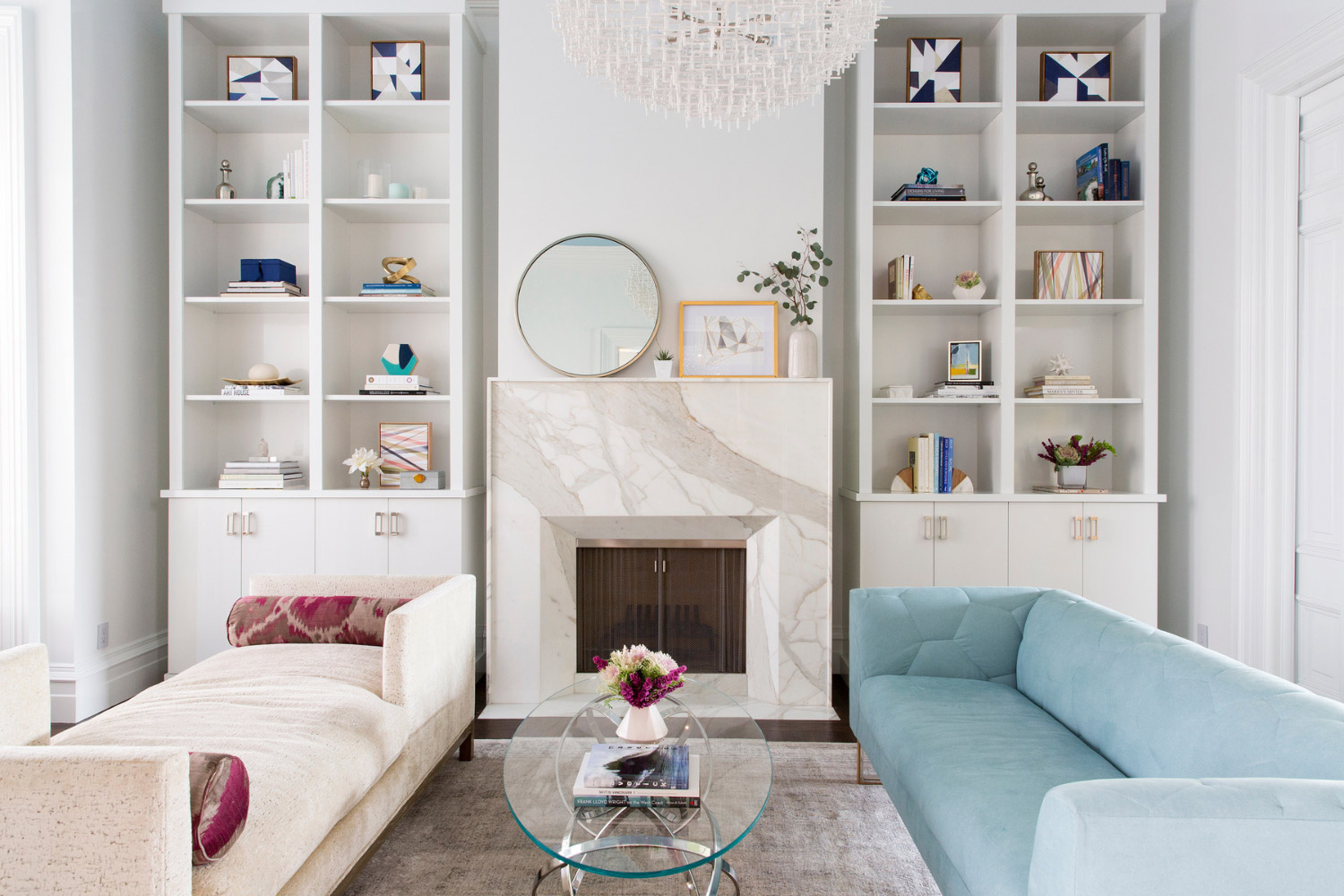5 Things Designers Do that Drive Normal People Nuts

Our clients hire us for our design expertise, creativity, and deep knowledge of how to craft a lifeproof, luxury home. In other words, they’ve willingly signed up for our detail-oriented, perfectionist ways. Our spouses and partners, however, actually live with us. (Don’t feel too bad for them just yet.)
This week, I thought it would be fun to take you inside our lives and homes. What do designers do that surprise “normal” people? What habits drive our partners, families, and friends nuts? What design tips can you glean from our habits, if you want to?
1. We Design for a Clutter-Free Home, Always
A cluttered home is a stressful home, and as you know, it can build up sneaky-fast. This is why most designers are so vigilant — to the extreme — about keeping our homes clutter-free. Does this mean that our homes always look clean and perfect? Of course not. We have kids, too.
However, it does mean that everything has a designated place, which makes pickup fast and easy. We have guidelines and rules around clutter, which helps keep it from accumulating. And, we’re very selective about what we allow into the home in the first place. Some ideas for you:
- Give everything a “home” so you know exactly where it belongs.
- Store everything in decorative boxes or neatly concealed in drawers.
- Create clear parameters around where toys are allowed. For example, our kids know their toys are only allowed in their rooms and in the family room.
- Each time you add an item to your home or closet, remove one. This is especially important around seasons of giving.
- Create a daily practice of tidying up, and get your family involved! You’re in this together.

Scandi Modern Project | Photographer: Vivian Johnson
2. We Say “Sofa” Instead of “Couch”
Sofa or couch — does it really matter? YES. While we won’t grammar-police our clients, our loved ones know that this common mixup is a pet peeve of ours. Why? Because they are not the same thing. As design professionals, we must use precise language to communicate exactly what our clients want. So, what’s the difference?
A couch, by definition, has no arms and is made for lying down. A sofa, however, has arms and a back, like that sectional in your living room. True, in everyday life, it doesn’t really matter which term you use, since they have become interchangeable, but if you really want to impress your designer, sofa is the way to go.

San Francisco Style | Photographer: David Duncan Livingston
3. We Love Sheer Drapery
Our obsession with sheer drapery mystifies friends and family alike. If you’re like them, you may be thinking, “What’s the point of sheer drapery? It doesn’t block light or provide privacy.” True. But even though functionality is our first objective, style is always the second. With sheer drapery, it’s about the look.
What does sheer drapery do in a space? Well, it may not block light, but it acts as a filter, making the window seem less harsh and creating a soft, natural ambiance. It adds texture, depth, and dimension to the space, especially when paired with other custom window treatments, such as layered over Roman shades (as shown below) or under thick, luxurious curtains.
P.S. If you’re looking to update a room, adding new window treatments is a great way to do it. Take a look at our Designer on Demand service to learn more about how we can help.

Scandi Modern Project | Photographer: Vivian Johnson
4. We Always Have Centerpieces on Our Dining Tables
Designers love focal points, especially on our dining room tables. A bare dining table is like a flat, missed opportunity — and it is glaringly obvious to us. Adding a centerpiece creates focus and enhances the feel of the room. We can also easily change up color and texture throughout the year, for example:
- In the spring and summer, opt for simple and fresh with flowers that are real, dried, or faux.
- In the fall, keep things a little more traditional with pumpkins and gourds — these last forever.
- In the winter, add softness and texture with candles or pine cones.
With a busy family, your dining table is likely more functional than decorative…I know. But don’t let that keep you from having a beautiful display. Centerpieces can always be moved aside for puzzles, homework, meals, or art projects. Sure, you may find yourself constantly moving the centerpiece back to the center, where it belongs, but if you ask us, it’s worth it.

Scandi Modern Project | Photographer: Vivian Johnson
5. We Organize Books by Color, not by Title or Content
Guilty. You may question our sanity, but organizing books alphabetically or by content results in a mish-mash of colors — and a scattered, messy feel. When you arrange books by color, the display becomes pleasing and calming. No, they don’t need to be in rainbow order; simply putting similar or complementary colors next to each other will change the whole appearance of your shelves.
Don’t believe me? The next time you’re looking at a home in a design magazine or article, peek at the shelves. You’ll find books organized by color, books that are flipped backward (so that only the white pages show), or books that are covered in all-neutral jackets. That’s intentional, creating a crisp, clean look. It’s not just us! Try it yourself, and I think you’ll be pleasantly surprised.

Beach House Project | Photographer: David Duncan Livingston
Need some support identifying ways to update your home for greater peace, day-to-day ease, and lifeproof luxury? That’s what we do.
Reach out to schedule a complimentary discovery call, and let’s talk.
Cheers,
Melanie